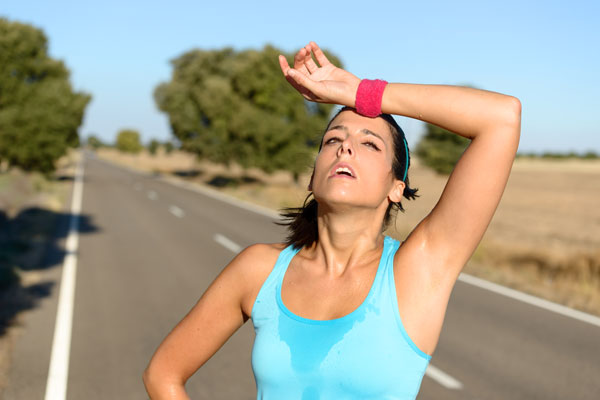With summer just around the corner, temperatures will soon be increasing, which means extreme heat levels are to be expected. This is also the time of year when we see a rise in heat strokes. A heat stroke occurs when the body’s temperature elevates to about 104°F (40°C) or higher, and the body’s vital systems of self-regulation begin shutting down.

Often times when we hear the words “heat stroke,” one might think it mainly affects the elderly, however, younger people (especially athletes) fall victim to extreme heat levels that can be fatal.
One thing you should know is that heat-related deaths and illnesses are easily preventable. Here are five ways to avoid suffering heat stroke during summer and the signs to be on the lookout for.
How to Avoid Heat Stroke
- Wear light-colored, loose-fitting, breathable clothing (i.e. cotton). Wearing tightly-fitted clothing or excess clothing prevents the body from cooling off properly.
- Drink water regularly, so that your body remains hydrated. It’s important that you drink enough water that you never become thirsty. Staying hydrated helps your body sweat and regulates your body’s temperature.
- Protect yourself against sunburn. Sunburn affects your body’s ability to cool itself, so when going outdoors, wear a wide-brimmed hat, sunglasses and use a sunscreen with an SPF of at least 15. Apply sunscreen every two hours or more if you’re swimming or sweating. Also, try avoiding any strenuous activity during the hottest parts of the day. Wait until it’s cooler such as early mornings or late evenings.
- If taking medication or you have a condition that increases your risk of heat-related complications, monitor your physical condition and watch for signs of heat stroke.
Even if you plan to leave the windows cracked or park your car in the shade, never leave anyone alone in a parked car. Your car’s temperature inside can quickly rise an additional 20°F (more than 6.7°C) in 10 minutes.
Signs of Heat Stroke
Here are some signs to look for if you think someone might be suffering from a heat stroke:
- High body temperature
- Throbbing headache, dizziness or lightheadedness
- Lack of sweat or sweating profusely
- Pale skin or red, hot, and dry skin
- Muscle weakness or cramps
- Nausea or vomiting
- Rapid heartbeat (may be strong or weak)
- Rapid, shallow breathing
- Behavioral changes such as confusion, disorientation, fainting, or staggering
- Unconsciousness, seizures, or coma
If you believe someone is having a heat stroke, seek emergency medical attention immediately. If medical treatment is delayed, the heat stroke could cause severe damage to the brain and other internal organs or result in death. Be smart this summer, remember the five ways to avoid suffering a heat stroke, and watch for the signs!
Regardless of your safety precautions against heat stroke, we know that unexpected health situations can occur. That’s why we’re here for your 24/7/365. Visit https://nec24.com/ to find a Neighbors Emergency Center near you!

